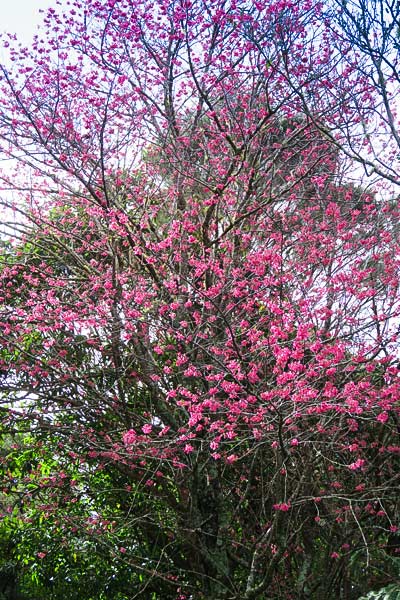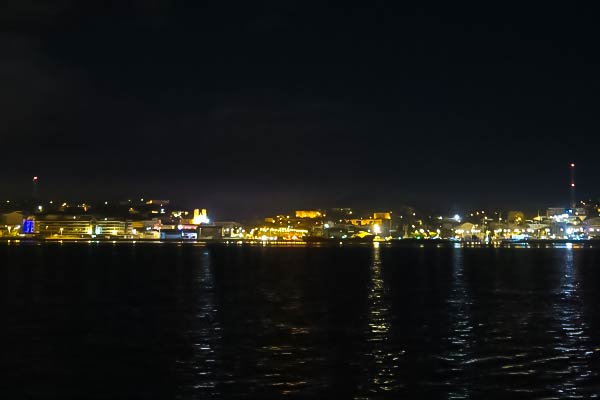August 14, 2016
Here it is, halfway through the cruising season, and we’ve finally arrived in the tropics. I’m sure many cruisers would find the sight of us pulling in only now pretty appalling. In the past I’ve seen the late arrivals and just thought, “Wow” and not in a good way. Having now experienced late arrivalship for ourselves, I would say there are three ways to look at the process that led us here.
1. Legacy can serve as a warning. There’s an old adage about avoiding leading a life that serves as a warning to others and, for some, we would now be in that category. The warning would be that if you’re planning to continue on from New Zealand and this is your only chance to see this area of the tropics, be in the port you wish to leave from, basically ready to go, by the end of April; then take the first reasonable weather window because another may not be coming anytime soon. We were assured again and again that people leave in the winter all the time and weather windows always come along. They do always come along, if you’re willing to go out there and take a beating!
2. Legacy can serve as a lesson. There’s no doubt about it: this year has been a hard one weather-wise for making the passage between New Zealand and the tropics. The “weather windows” have been tough, typically including a beat into strong northerly winds, sailing through a trough or two, and enduring big swells and rough seas. The death count is two. Manner of death: being crushed by rigging and being swept overboard and lost at sea. Circumstance leading to the deaths: bad weather. Aside from the loss of life, I’m sure there have been countless little injuries: the sprains and strains, the burns, the bruises. You can suffer these and go on. But there’s another injury that you can’t see: the mental trauma that can happen during a passage. This one results in people saying, “Never again!,” and it can be fatal to your cruising life (whether it happens to you or your partner). There are many cruisers out here who can tough out anything and think nothing of it. There are others who are always just one or two bad passages away from quitting. We’d count ourselves in the latter category, and that’s why we take so much care in choosing weather windows.
For those who are also in this category, the lesson is this: You don’t have to go. You don’t have to take a bad window. The alternatives have costs: the medical tests required to extend a visa are expensive, but the 3-month extension process is straightforward and do-able. We chose to travel out of New Zealand and come back in, which was also expensive and not without issues. Bottom line if you opt to go the travel route: talk to immigration before you leave, point out you came in by yacht, get the go-ahead from them before you leave, and bring your TIE (Temporary Import Permit) with you because you may need it at the ticket counter when you return! Tell them the reason you are going is for a vacation. I think it also helped to have our visa expire while we were gone. This is a bit of a gray area; so I’m cautious about recommending it even though it worked for us. There’s also the issue that you are only allowed to be physically present in New Zealand for 9 out of every 18 months. If you stay there longer than six months, you’ll need to either spend the next cyclone season somewhere else (like Australia or the Marshall Islands) or go through another process in New Zealand that involves further costs and searching your police records (I don’t know much about this since we’ve opted to go to Australia next season).
The medical tests are a pain in the ass and expensive ($1,650NZD for 2 people). The travel was less expensive ($1,200NZD including air and four nights in a luxury hotel in Melbourne for 2 people) and a whole lot of fun, but stressful in that it seemed like we were in a murky area–we never felt completely confident they’d let us back into New Zealand. But both were, for us, far preferable to a bad passage. There’s no triumph in squeezing out just before your visa expires if you end up saying, “Never again.”
3. Legacy can serve as an inspiration. When complimenting local Kiwis on their home country and saying how lucky they are to live there, we often heard, “It’s nice now but the winters are terrible!” After hearing this enough, we had this vision of winter in New Zealand involving daily freezing rain, dark stormy weather, and very cold temperatures. We’d come to fear the New Zealand winters and were always glad to get out in time to avoid them. Leaving late this year we got to experience the dreaded winter for ourselves. The outcome? Every day we’d look around and say, “Are you kidding me; this is the winter we were so afraid of?” It’s like having been warned about a loose man-eating tiger roaming the neighborhood only to find that people are referring to the neighbor’s orange, neutered, overweight tomcat who will deign to eat nothing but Fancy Feast. (Why do cats always hate the healthy Science Diet-type food that the vet prescribes?)
Anyway, my point is the winter weather in Opua was closer to winter weather in Hawaii than anyplace else I can think of. Yes, I know New Zealand gets a lot colder the further south you go, but we were much warmer in Northland than we would have been in Los Angeles. It’s not that it’s balmy, it’s just that it’s not that cold. It’s jeans, T-shirt, and bring-a-sweater weather during the daytime and use a small space heater with a thermostat at night. There are frequent rain showers, but they pass and the sun comes out again, making Opua, like Hawaii, a land of rainbows. There are some days when a weather front passes over and it rains and blows, but they’re surprisingly infrequent. It generally rains during the night, which is a pleasant sound to wake up to. On my morning walk to the restrooms I’d wear yoga pants, a sweatshirt and flip flops and be very comfortable, often exclaiming what a beautiful morning it was! We kept waiting for that winter weather to arrive, but it seemed stuck in an endless cycle of early spring. Aside from the deciduous trees being bare, the world just seemed to get increasingly green, and there were always flowers blooming.
Meanwhile we had other reasons to enjoy ourselves in Opua. We enjoyed reconnecting with friends we haven’t seen in a long time. We also enjoyed feeling like part of the community there; Opua feels like a second home to us. Plus there are some amazing eateries in this area and we took full advantage! We fell into a rhythm and routine that was very enjoyable, and the weeks passed quickly.
Opua was also a place to rest and recuperate. We both caught the flu and between us we were sick for three weeks. I also didn’t realize how much we needed a break from travel for awhile. We’ve covered a lot of ground in the past two years and it felt great to take a time out from all the planning and constantly thinking about the weather.

In fact, this break was so nice that had we been able to, we might have opted to stay put in New Zealand this season. The surprise roadside plant coming in this month was jasmine, which suddenly seemed to spring up all over the place. In another week or so the countryside would smell incredible. I’m sure spring in New Zealand would be magnificent, and it would have been so wonderful to see it develop. We even fantasized about watching the cruising boats arrive, greeting old friends and partaking in the festive atmosphere that happens in November. Alas, it wasn’t an option for us.
When we did finally get away, we were relieved to have a good window, but we were a lot less happy to be leaving than we usually are. We won’t be back next season, and it may be awhile before we see New Zealand again. In all, for us, it was well worth waiting for that good weather window. In fact we would count this as one of our best passages. The surprise was that, by the time we left, we were sadder about leaving New Zealand than we were about the lateness of this window. –Cyndi
This is a shot of Noumea, New Caledonia, from our anchorage after we arrived around 10pm.







